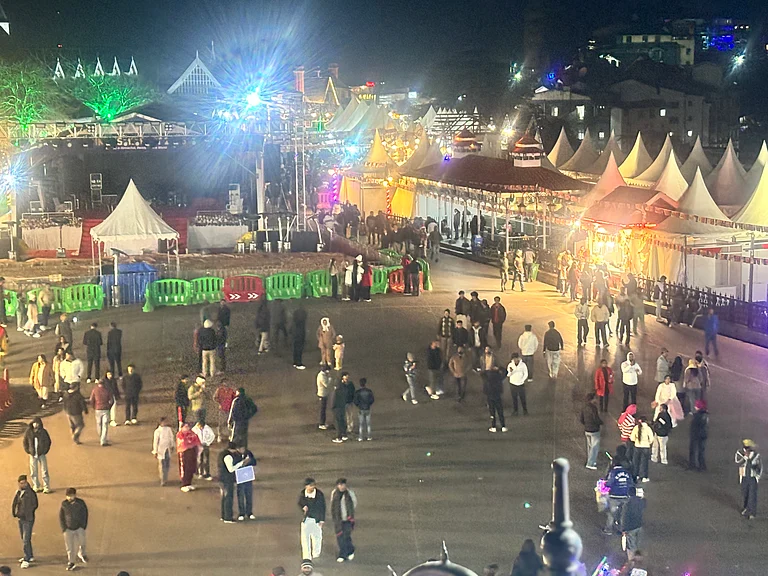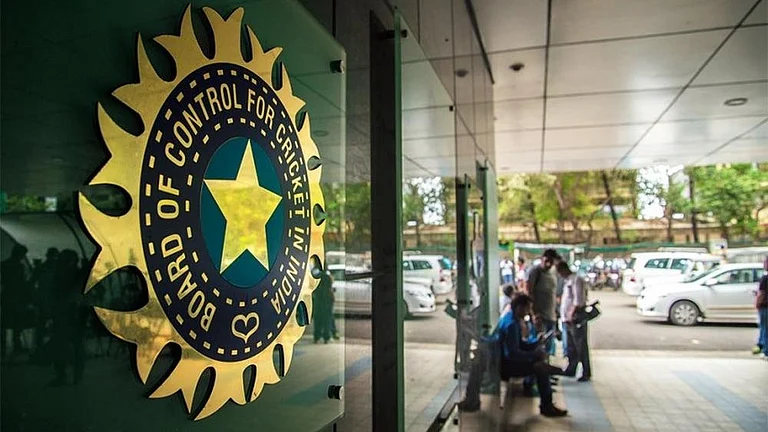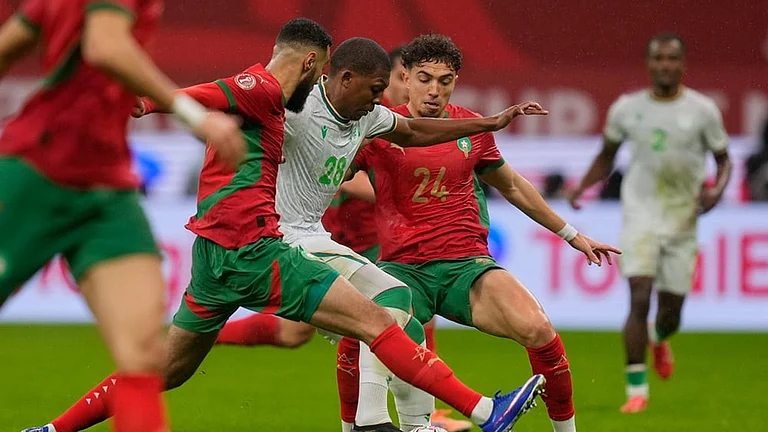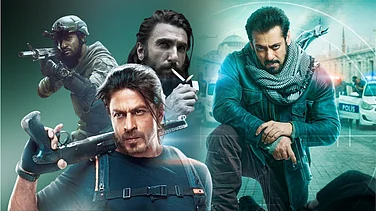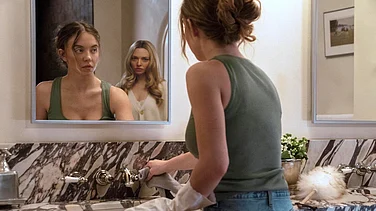The human leg is a recurring motif in Jithinlal NR’s work. The leg and feet are the embodiment of the lowest rung of an oppressive caste system. Through layered and unsettling drawings, visual narratives, installations, and paintings, Jithinlal draws our attention to the representation of marginalised and oppressed communities. The emphasis on the self-representation of Dalits stands out as a major theme in his work. His art demonstrates the new movement of marginalised people narrating their own stories. For Dalits, it is about claiming their own space, history and means of expression, a right denied to them by colonial and Brahmanical structures of India’s caste-ridden society.
In ‘Wounds and Stars’, a painting featuring a lean farmer with one leg swollen due to filariasis, Jithinlal, in a close-up of the same leg, shows wounds visualised as cracks. For the young artist from Kerala, the swollen leg represents caste oppression. But the farmer in question is also seen staring stonily into space, perhaps into the future, indicating a sense of hope and emancipation from the drudgery of manual labour.
This practice of linking body parts with caste identities and realities informs many of Jithinlal’s artworks which are on display at the fifth Kochi-Muziris Biennale 2022-23 in Kerala. Born into a middle-class family in Ernakulam, his father worked in the Railways as a section engineer. His parents had had an inter-caste marriage. “Even though I was born in a ‘Dalit colony’, I hardly lived there. We were lucky to be mobilised out of the ghetto due to reservation,” says Jithinlal.
His fascination with the idea of ‘standing up or making something stand by itself’ propelled him to visualise the diagram of the four-tier caste system with the Shudras—‘the legs’—at the bottom rung and the ‘untouchables’ (pejorative term for Dalits) even below it. “I was thinking of that image as a depiction of the social condition, and how violent it is,” says Jithinlal.
Folk songs and local traditions have played a major role in developing modern Dalit art and consciousness. For centuries, Dalits have been deprived of telling their narratives, let alone accessing education and producing literature. But is there something that can be defined as ‘Dalit art?’ Is it an expression of the lives of the marginalised? Or are we still defining ‘Dalit art’ from the appropriated lenses of the upper caste and Brahmanised communities?
Jithinlal doesn’t mind calling himself a ‘ Dalit artist’ in certain contexts but at the same time, he feels it is a kind of “ghettoisation”; what once happened with land reforms in his state, is happening through language in the art world. “I don’t think there is something called ‘Dalit art’ if we are trying to define it in terms of style and theme, because then it becomes a stereotype. I think that is what is happening in the mainstream art world by and large, but the important thing for me is to ask what it rather proposes. I see it as a new sensibility to look at the world, a kind of a new episteme. I think ‘Dalit art’ is in a state of flux which changes and can accommodate a lot of things apart from identity discourse,” says Jithinlal.
Folk songs and other oral traditions are testament to the unwritten histories of marginalised communities. Jithinlal draws inspiration from Poykayil Appachan, a social reformer from Kerala and an active participant in the state’s renaissance movement. Appachan used a form of folk song and “subaltern speech to create art for the slave caste,” says Jithinlal. Most of these songs were either sung during work or in between breaks. Through these songs, workers were able to make manual labour bearable. Most of the songs are political in nature since they are also about a shared history and common emotions felt by Dalits.
Art forms can often be associated with class or caste hierarchies, says Jithinlal. This made him wonder why there was no elaborate art form from the lower strata of society. Perhaps, the simplest art forms they could rustle up under harsh working conditions were their sounds and words. He is careful not to romanticise the tradition. However, he says, “When I look back, the thing that has driven me the most is what it means to be a Dalit in terms of the future.”
Certainly, Dalit voices and identities in the country are not a homogenous entity. They vary from region to region and employ different modes of expression to capture local hierarchical concerns and iconography. But is there a common thread in Dalit art? Does the theme of caste oppression, which features in his work, play a single dominant role in this new paradigm of art practiced by the marginalised?
“I think the common thread is the subaltern sociality it proposes, a discourse of equality,” he says, in response.
Among his most favourite artworks is ‘The Flaming Feet’, an installation that he fashioned out of cut-out drawings and found objects while at the Gasworks residency in London. It is an extension of a colonial photograph. Using ink, charcoal and found objects, the installation is based on an interpretation of a story of a Dalit uprising against an oppressive king from the book The Flaming Feet and Other Essays: The Dalit Movement in India by DR Nagaraj.
Many of the artist’s ideas are based on his own lived experiences. Therefore, his memories, including those relating to the land reform movement in Kerala, have become a reference point for his art. “I think my agency is a very important thing that I value. It is also about assuming a political position as I understand it. I take a ‘position’ on it since I was born in a ‘Harijan settlement colony’ which in itself is a historical testimony to the failure of land reforms.”
So, does his identity restrict his art or nurture it? When he started out, ‘identity’ was an essential tool through which he understood himself and his surroundings. But as he started to think critically about his own practices, he learned how to look beyond it. “Identity is a two-edged blade, if you don’t know how to handle it, it can hurt you badly!”
(This appeared in the print edition as "Standing Tall, Painting Truth")








